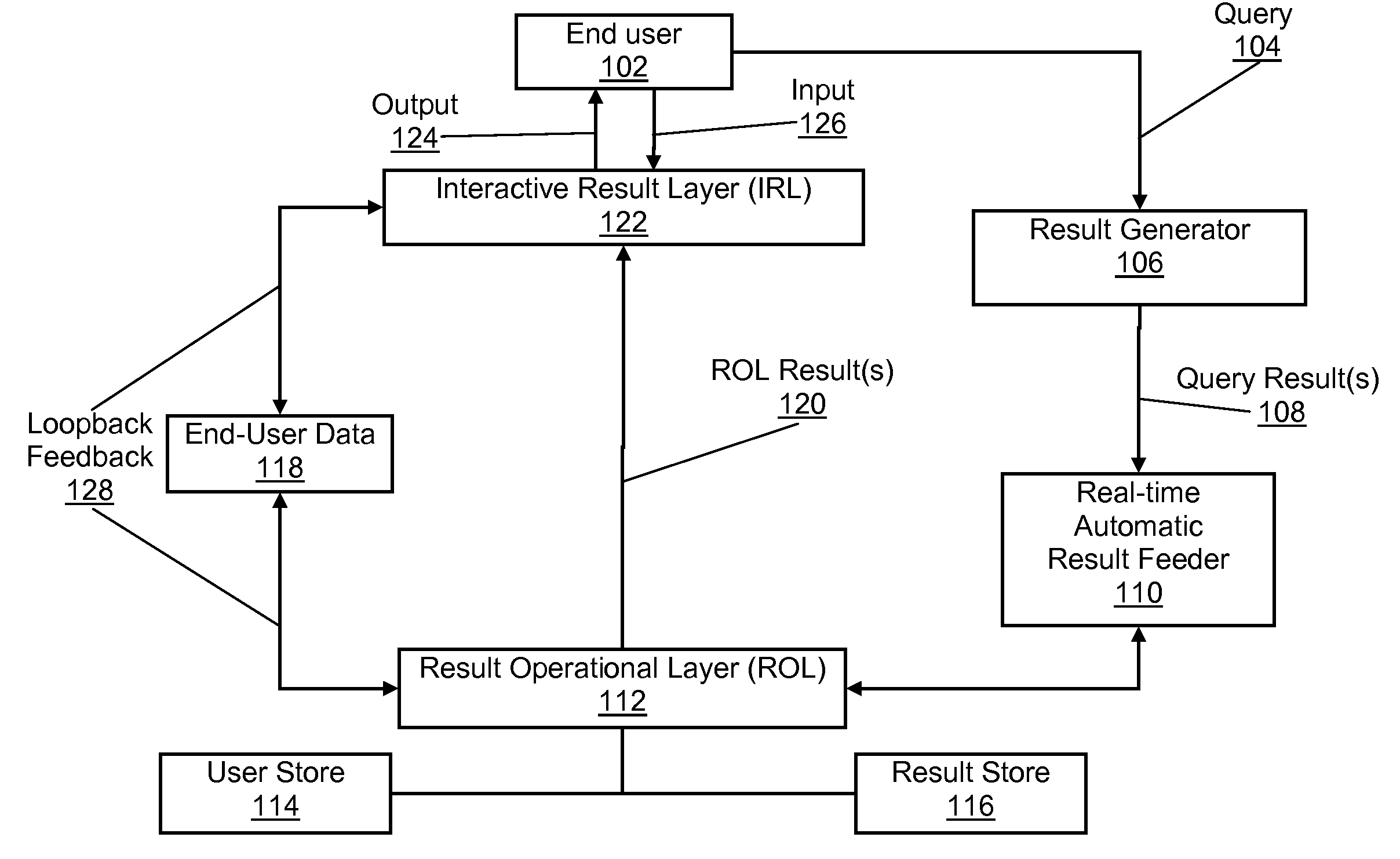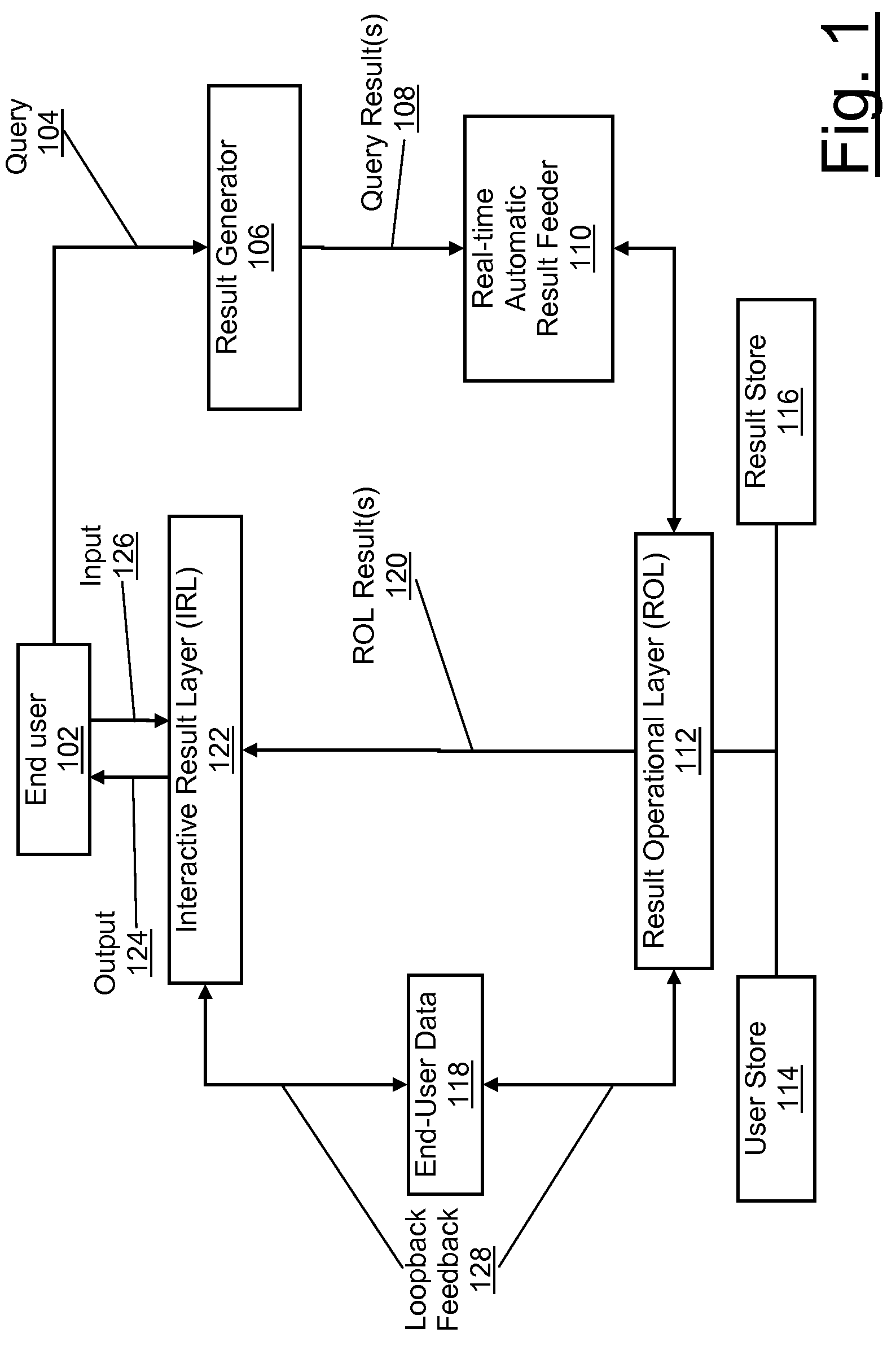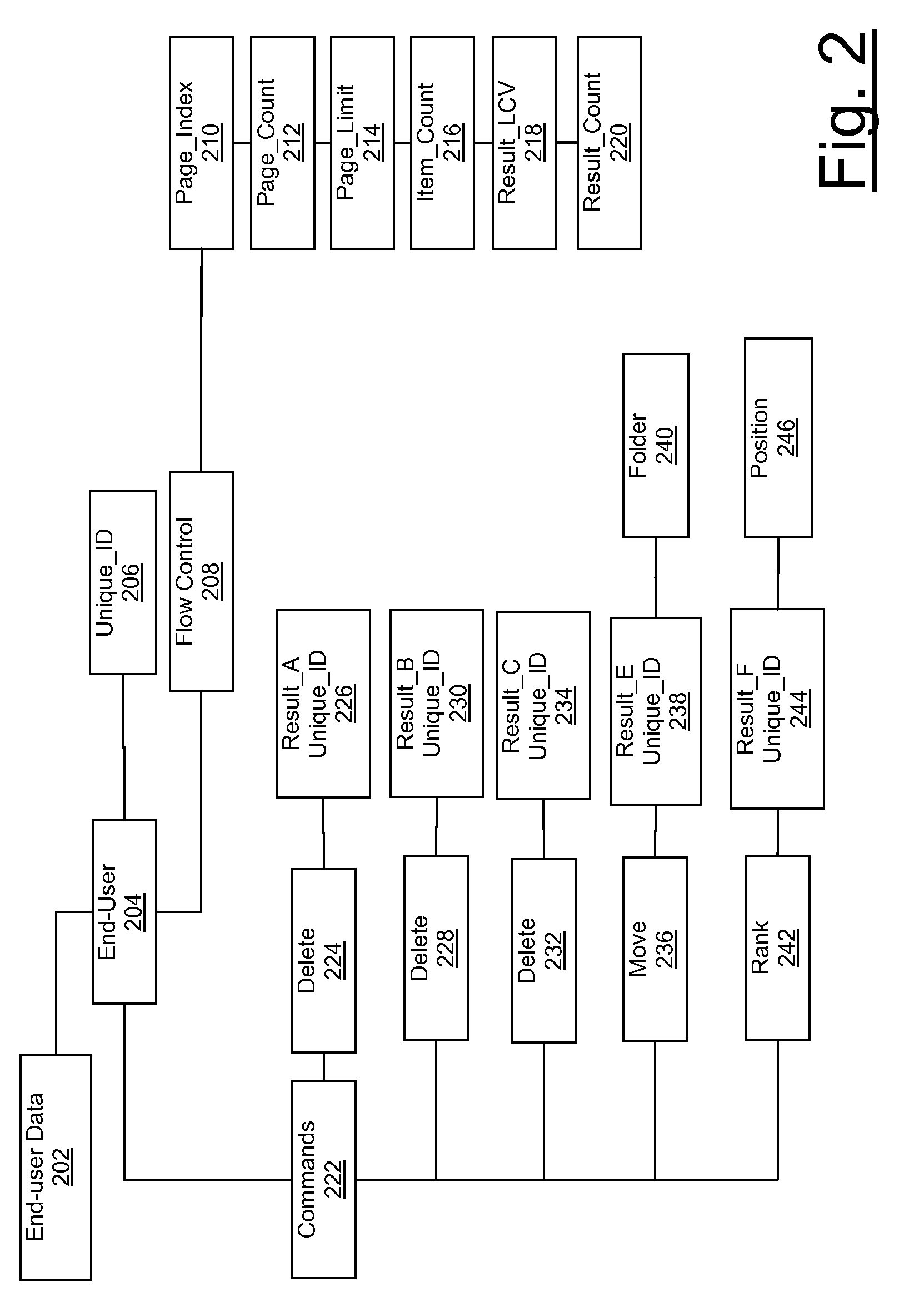System and method to facilitate real-time end-user awareness in query results through layer approach utilizing end-user interaction, loopback feedback, and automatic result feeder
- Summary
- Abstract
- Description
- Claims
- Application Information
AI Technical Summary
Benefits of technology
Problems solved by technology
Method used
Image
Examples
Embodiment Construction
[0045]A preferred client / server embodiment of the present invention operates in a computing environment, comprising: an end-user, individual computing device interconnected over a network such as the Internet, a result generator located on a server or servers responding to at least one query made by said end-user and generating query results, a real-time automatic result feeder controlling the flow of results to the ROL, a Result Operational Layer (ROL) operating on results and outputting ROL results and end-user data, User Store, Result Store, an Interactive Result Layer (IRL) facilitating end-user interactions with said ROL results, and loopback feedback from IRL to ROL. However, there can be a client-only embodiment of the present invention where the real-time automatic result feeder, ROL, IRL, user store and result store reside on a single computing device receiving results to a query.
[0046]FIG. 1 is a flow diagram of the present invention in an exemplary embodiment. An end-user...
PUM
 Login to View More
Login to View More Abstract
Description
Claims
Application Information
 Login to View More
Login to View More - R&D
- Intellectual Property
- Life Sciences
- Materials
- Tech Scout
- Unparalleled Data Quality
- Higher Quality Content
- 60% Fewer Hallucinations
Browse by: Latest US Patents, China's latest patents, Technical Efficacy Thesaurus, Application Domain, Technology Topic, Popular Technical Reports.
© 2025 PatSnap. All rights reserved.Legal|Privacy policy|Modern Slavery Act Transparency Statement|Sitemap|About US| Contact US: help@patsnap.com



